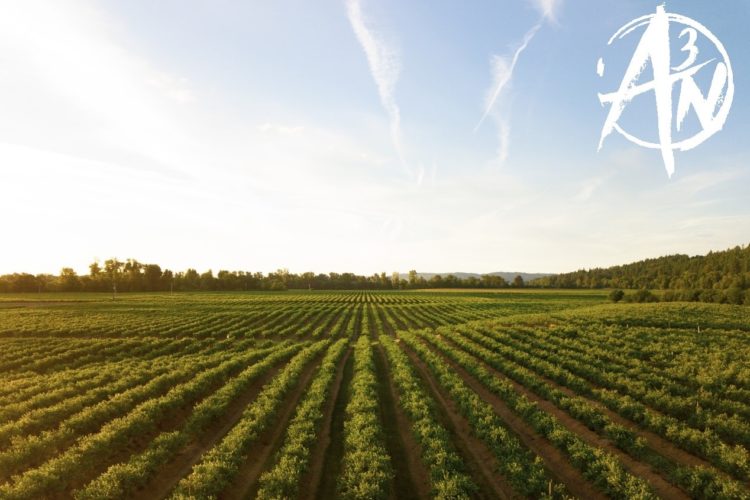
Agribusiness Agorist Style
As agorists seeking to demonstrate that the state is obsolete, we look for new solutions to real world needs. To be successful, we must look to alternatives and to the fringes to find voluntary solutions to the problems of the world. We cannot take the well-trod path, doing the same thing everyone else has been doing. That is the path of statism, though we hope one day it won’t be. That is the path of the status quo and though we want to change the world peacefully and effectively, we are looking to stir things up a bit. This is true in our take on business, and it often confuses statists. We support business, but we don’t support corporations, at least as the legal fictions that exist now, nor the protectionism tariffs, or subsidies to business. This includes farm subsidies.
We don’t have anything against farmers. They can be great allies because they typically have to solve their own problems without government interference. Many of us grew up on or near farms and have fond memories of the farm activities. That said, there is a better way than the massive agribusiness “farming” that is going on today.
Before we look to those alternatives, let’s examine the current state of agribusiness. The size of Big-Ag isn’t where our beef lies. The problems of Big-Ag are due, in part, to their ties to government, and in part due to unsustainable practices. That said, when Big-Ag and factory farming began it made sense. That is a controversial statement in some circles, but nonetheless it remains true. Given what they knew post WWII, it made sense to raise more animals on less land. The new chemical fertilizers were a wonder to farmers at the time. There was more profit, and more people could be fed which was vital in the post war period. These early versions of Big-Ag were profiting on the efficiency of scale, and the inexpensive cost of grains. For a few decades, farmers enjoyed a good income before the unknown costs began to come to light.
We now know that thanks to Big-Ag and manufactured chemical fertilizers, as well as advancements in the equipment of farming, it is possible to create enormous amounts of food. We have seen animal operations grow in size and density of animals, creating a simple small area where animals can be grown and harvested. Even Monsanto’s infamous Round-up and Round-up ready seeds make a certain amount of sense as they allow herbicides to be used without harming the crops. But these advancements have come with a price, one that gets higher every year we continue using such methods. Animal waste is creating a habitat nightmare, ruining many waterways and drainage systems. The soil, when animals are allowed on soil, is never given a chance to recover from the physical and manure impact. The problems with Round-up continue to be exposed, including links to cancer and other health problems. Several nations have banned the use of it entirely due to these concerns.
Other problems have arisen as well. Today, we know that animals in a high density can spread disease, pollute the waters, and result in poorer quality products in the end. Government subsidies have helped farmers continue the same practices which get less profitable per animal each year. Such subsidies and bailouts confuse the market by sending signals that the same old approach is working, when in fact it is failing. When oil was cheap, the market used it freely both in the form of diesel for farm equipment but also in the fertilizers that rely upon fossil fuels for production. Salts from the chemical fertilizers build up in the soil, destroying the bacterial life and microorganisms necessary for a healthy ecosystem. Those fertilizers further deplete the soil through salt build up and stripping out micro-nutrients upon which plants depend. Perhaps the worst-case example of government interference and horrific outcomes was the Dust Bowl Era. Farmers were told by the government to plow and plant, which dried out soil more and caused topsoil with all the bacteria life to be blown away. Yes, weather played a huge role, but the government interference, as always, made the situation much worse.
So, what is the agorist to do? We — of course — know that taking subsidies is a fool’s game even if we did not want to distance ourselves from the state. Once a subsidy is taken you are at the will of government bureaucrats to dictate how every element of the farm must be. If you have not complied with every regulation, even those you had no way of knowing about, the subsidy is pulled, and the farmer is left in debt. Is there a way to find a solution to mono-cropping and single large-scale animal farming?
Fortunately, there are alternatives. Smart and creative people, whether explicitly agorists or not, have pioneered solutions to these problems. As agorists, we can embrace these farming rebels and real-world solutions. Often, these solutions are found at the fringes of land, popular thought, or combinations of ideas previously thought implausible (such as farming in deserts).
Rancher/farmers like Joel Salatin, author of several books including Everything I Want to Do is Illegal, uses intensive rotational grazing and several forms of livestock to improve the soil, even on marginal land. Salatin also breaks the pest cycle by running chickens through the pastures after the cows so the chickens can eat any fly larvae before they become pests that annoy other livestock and spread disease. This means Salatin does not need fly sprays and other chemicals that many modern ranchers use. He has taken rocky, treed land and turned it into great pasture by grazing cows, pigs, and chickens on the land in succession. The areas left forested are still rocky without the added soil. This is because it is the animals, not trees, that turn the grass into manure, and the manure in turn changes the rocky ground into soil, that soil eventually turning into lush loam. But he isn’t doing this out of the goodness of his heart. He has a business to run. So, he has sought many ways to monetize his operations. He leases land for less than he makes from it but has no property taxes to pay on it. He sells the meat and produce. He gives farm tours, sells books, and gives lectures. By expanding the income streams, he has created a thriving agribusiness without adopting the standards approaches to livestock or vegetable production.
Justin Rhodes has adopted much of Salatin’s approach and that of others to show how a homestead cannot merely survive but thrive and profit as well. One of the unique ways that he is bringing in an income is through the YouTube audience. With over half a million subscribers he receives some YouTube ad revenue and given the size of his audience he can get products free or at a great discount from suppliers to use and show his audience. While his land is good for agriculture, it is not located near the major agricultural centers, putting it on the fringe of agriculture. Moreover, with so many homesteaders shunning modern technology, people like Rhodes have found a niche area in which they can profit from simple agriculture. Many others are also demonstrating that this model works for them as well, often through collaboration with previously existing examples.
Regardless of what your situation is, whether an eager worker, a landowner, a manager or curator of lands, you can find a role in this approach. Imagine a scenario where you lease your land to a farmer or set of farmers who will run the animals on the land. You set up a multi-year plan where they will run the animals using this system as their guide. After that set of years, you have much improved land, and the income from leasing the land. Or imagine you are an eager worker who wants to have livestock, but who has no land. You work out an arrangement with the landowner to lease his land with the promise of improving it as well. You get to run your livestock and make your income from that, with almost none of the expenses that come with land ownership. You can avoid property taxes entirely on your agribusiness.
Fringe practices and mediocre land are one way to employ agorist practices to create profitable businesses, but we should also consider fringe land itself. Steep land can be homesteaded, even rocky soil and deserts are proving to be real possibilities. The land is sold very cheap because the sellers and the market in general believe the land to be all but useless. Similarly, there are efforts to restore land that has been taken over by deserts.
Current small-scale projects already exist using sea water and concentrated solar energy to turn that sea water into fresh water. To maximize profit opportunities the sea water is first used to grow micro-algae, seaweed, and shrimp with the waste products supplying the other crops with fertilizer. The sea water is then evaporated and condensed to create the fresh water needed for farming. In some areas, this can provide over five times the freshwater than the average annual rainfall and does so without draining aquifers or any surface water. The salt left behind can also be sold to further add to the profitability of such systems.
In other desert reclamation systems, swales, which are berms or small hills that control rainwater, are used to simply hold the little rainwater that they get on the land for longer so that it can be taken up by crops. In turn those crops shade the land, meaning water evaporates more slowly, further allowing uptake by the plants. The net effect of this is reclaiming of the desert into productive land. When this is practiced over a sufficiently large area it can lead to a change in weather patterns, further increasing average rainfall. In agorist terms, the effect is demonstrating that individuals can improve the environment, while making a profit, all without the interference of the state.
Most of these systems allow production on poor land, meaning the entry costs are far less, in some cases where land is leased just for the improvement of the land, the entry cost for land is zero. This opens the opportunity not only to those already in some agriculture industry, but also to those with little means to greatly improve their own life and situation, while simultaneously spreading the ideas of agorism. Demonstration is the most powerful tool we have to defeat those who claim government is necessary for a given result.
This approach has the added benefit of depriving the state of the tariffs that are currently popular with agriculture products such as lumber, corn, and cotton. Though we try to shun interaction with the state, there is one way to interact with the government: take the Agriculture tax exemption. This may seem counter-intuitive at first but remember that we are trying to not only provide alternatives to the state but also to deny it its life blood: money. If the state offers to steal less from you, there is nothing immoral about reducing your tax bill any more than it would be if the street mugger offered to take only half of your money. You are not approving the theft but rather just trying to mitigate your losses. This is very different from taking the subsidies which come from theft from others.
There is no simple one agorist way to operate an agribusiness. There is no magic formula for success. That said, there are opportunities for agorists to help replace current agricultural practices, demonstrating not only a better way to produce food, but a better way to live. We can show that government isn’t necessary in the food arena, one of the most important aspects of human life. The value of our alternatives cannot be overstated. In this approach the biggest hurdle to overcome for once isn’t the government itself, but rather is our typically limited ideas of how farming and other agriculture must look and work.









